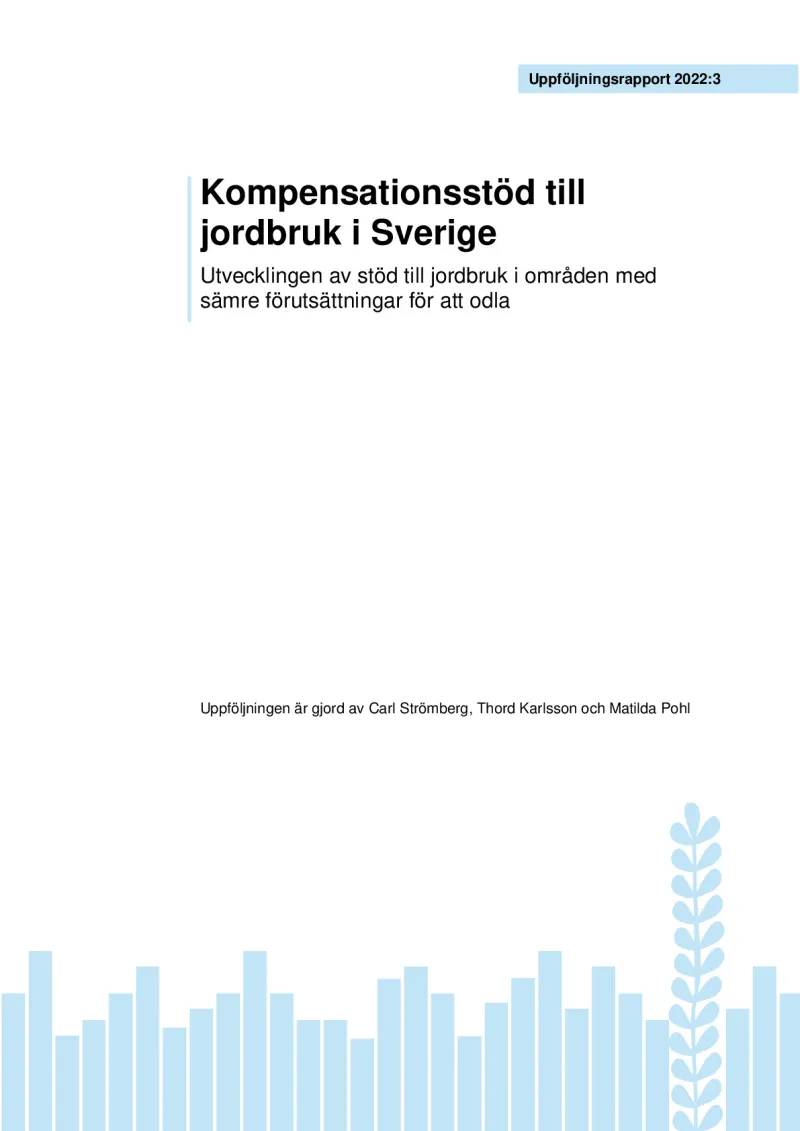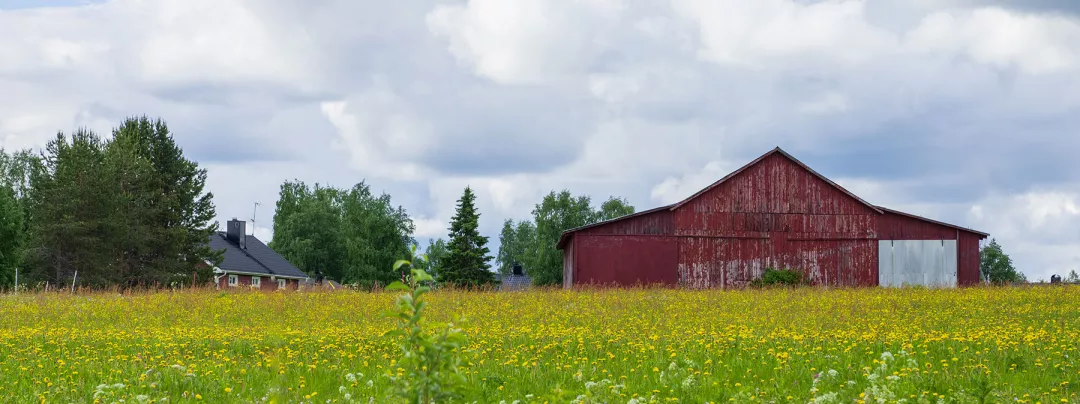Compensatory support for agriculture in Sweden
- Evaluation
- Jobs, Growth and Equality in Rural Areas
- Environment
- Agricultural Productivity
- Climate and Climate Change
- Evaluation
Compensation support, which aims to compensate agriculture in specific conditions and areas, is analysed through this follow-up study, which defines its design and how the support developed over time.
- Sweden
- Programming period: 2014-2022
- Sectorial impacts


Large parts of Sweden benefit from compensatory support under the 2014-2020 Rural Development Programme (RDP). The support is intended to compensate agriculture in areas with natural conditions that make farming more challenging. The aim is to promote the continued use of agricultural land, contribute to the preservation of rural areas and promote sustainable agriculture. This report is part of the follow-up to the 2014-2020 RDP. The report has been commissioned by the Swedish Board of Agriculture, which also reviewed its quality.
This follow-up report describes how the compensation support is designed and how it developed over time.
The purpose of the follow-up is to disseminate knowledge about outcomes and results and to make programme implementation more accessible and effective. It also gives an overview of how the Swedish compensation support is designed, its effects and how it has changed over time. The following questions regard the development of compensatory support: 1) How has the compensatory support developed over time? 2) What factors have affected development? 3) How is the compensatory aid set out in the 2014-2020 RDP? 4) How is the subdivision of the compensatory support designed to promote agriculture in areas with fewer opportunities for production?
The report does not clearly describe the method used. Data sources used are the official programming documents and the monitoring data.
The report highlights the limited availability of evidence on how the support is expected to contribute to specific objectives, design and implementation.
The study concludes that the idea of compensation for restrictions on production existed long before EU entry. In the early 1930s, a freight subsidy was introduced in some areas with long transport distances. In the 1940s, an additional milk price supplement was introduced for northern Sweden. During the 1960s and 1980s, the political initiatives to maintain agriculture in the northern parts of Sweden continued. In the late 1980s, animal and area aids began to be used. The basis for today’s compensatory support was introduced in 1995 when Sweden joined the EU. The result is a relatively complicated and intricate system of calculations and rules.
In addition, farm type and assisted area determine who is receiving compensatory support. Out of six agricultural types, five can receive compensatory aid. The agricultural type is determined by the size of forage crops, the size of animal holdings and the cultivation of crops. Farms growing forage crops receive support based on the stocking density of the holding and the support area in which the holding is located. The second important basis for receiving compensatory support is the area where the farm is located.
In conclusion, compensation support has been important to keep the country together as the rest of the world changes. Many different variants have been tested over the years, and their design has been influenced by reduced market regulation and increased free trade, where the General Agreement on Tariffs and Trade (GATT) has played a major role. With Sweden joining the EU, what is now called compensatory support was introduced. Since then, the requirements have become more and more detailed. The biggest change in the classification of support areas was made for the 2014-2020 programming period. A classification of agricultural land called areas of natural constraints (ANC) was introduced. Today, large parts of Sweden are in some way included in compensatory support. It is important for Sweden from several perspectives. Still, its importance is best captured by its goal: promote the continued use of agricultural land, contribute to the preservation of rural areas and the preservation and promotion of sustainable agriculture.
Author(s)
Carl Strömberg, Thord Karlsson och Matilda Pohl (Jordbruksverket)